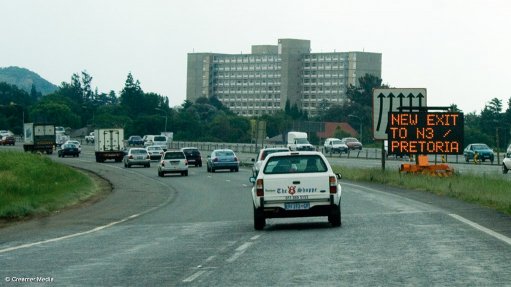
Conservatively speaking, South Africa is short between 150 and 250 intelligent transport system (ITS) engineers, technologists and technicians. This shortage exists in the private and public sectors, with the latter especially hard hit, says Intelligent Transport Society of South Africa CEO Dr Paul Vorster.
ITS describes technology applied to transport and infrastructure to share information between systems for improved safety and efficiency, such as messaging systems next to freeways, smart card payments systems, and electronic signalling providing right of way to buses in bus rapid transit (BRT) systems.
The 2005 baseline study on the shortage of civil engineers, technologists and technicians, undertaken by the South African Institution of Civil Engineering, showed a shortage of between 3 000 and 6 000 civil engineering professionals, says Vorster.
“When this survey was done, there were capital projects of around R200-billion on the country’s books.
“On the assumption that we roughly need two ITS engineers for every 100 civil engineers, this number translated into a shortage of between 60 and 120 ITS engineers at that time,” he notes.
“Since then, however, the capex book has grown about five-fold and transport projects have become significantly more ITS-intensive.
“The multiple BRT projects in operation are a case in point. In light of this, our estimation on the shortages in the ITS profession is not unreasonable.
“The current estimated number of ITS professionals in South Africa is between 150 and 250,” adds Vorster.
“Anecdotal evidence sourced by talking to project managers in charge of typical ITS projects as work in progress, is that they are short-staffed by 20%. This translates to an immediate shortage of about 50 to 70 ITS professionals for projects already awarded.”
The need for ITS professionals is also increasing as the transport industry globally morphs into a new guise.
Transport is moving from an old model where middle and higher income earners commuted almost exclusively by private vehicles, while lower income earners commuted by bus and rail, into a new paradigm of integrated and multimodal transport for all, says Vorster.
“Transport is morphing into a paradigm where it is defined in terms of mobility as a service, and no longer a product, where the commuter is tied-in with a single or limited mode, such as a bus, train or car.
“The focus is shifting towards everyone using a mix of modes to go from origin to destination, including walking, cycling (non-motorised transport), using taxis, ‘hail’-services such as Uber, BRT systems, park-and-ride, car-sharing and the Gautrain rail system.
“A key driver of this new paradigm is the availability of semi-real-time information empowering commuters/travellers to make smart trip, route and modal choices.”